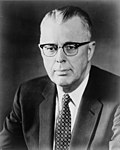Senate
Took office January 3, 1975
| State | Image | Senator | Seniority | Switched party | Prior background | Birth year | Ref |
|---|---|---|---|---|---|---|---|
| Arkansas |  | Dale Bumpers (D) | 2nd (97th overall) | No Defeated J. William Fulbright (D) in a primary | Governor of Arkansas U.S. Marine Corps | 1925 | [1] |
| Colorado |  | Gary Hart (D) | 4th (99th overall) | Yes Defeated Peter H. Dominick (R) | Attorney | 1936 | [2] |
| Iowa |  | John Culver (D) | 1st (96th overall) | No Open seat; replaced Harold Hughes (D) | U.S. House of Representatives [a] U.S. Marine Corps Captain | 1932 | [3] |
| North Carolina |  | Robert Burren Morgan (D) | 3rd (98th overall) | No Open seat; replaced Sam Ervin (D) | North Carolina Attorney General North Carolina Senate U.S. Navy Lieutenant Commander | 1925 | [4] |
| Vermont |  | Patrick Leahy (D) | 5th (100th overall) | Yes Open seat; replaced George Aiken (R) | Chittenden County State's Attorney | 1940 | [5] |








